Steel Products Prices North America
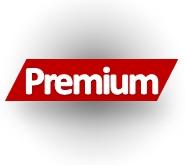
Raw Materials Prices: Iron Ore, Coking Coal, Pig Iron, Scrap, Zinc
Written by Brett Linton
May 22, 2020
The COVID-19 pandemic has resulted in weaker global demand for steelmaking raw materials. However, the cost of producing and delivering many of these commodities has also fallen. Strong demand in China is helping to buoy prices for iron ore and other materials.
Table 1 summarizes the price changes through May 21 of the five materials considered in this analysis. It reports the month/month, three months/three months and year/year changes on a percentage basis.
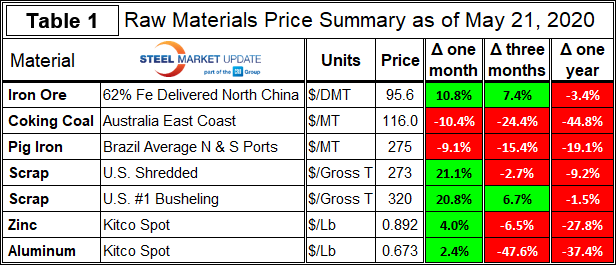
Iron Ore
The Chinese import price of 62% Fe content iron ore fines bounced between $82-$97 per dry metric ton in the first quarter, now up to $95.6 as of May 20, nearing the first quarter’s high of $96.7. Figure 1 shows the price of 62% Fe delivered North China since January 2018.
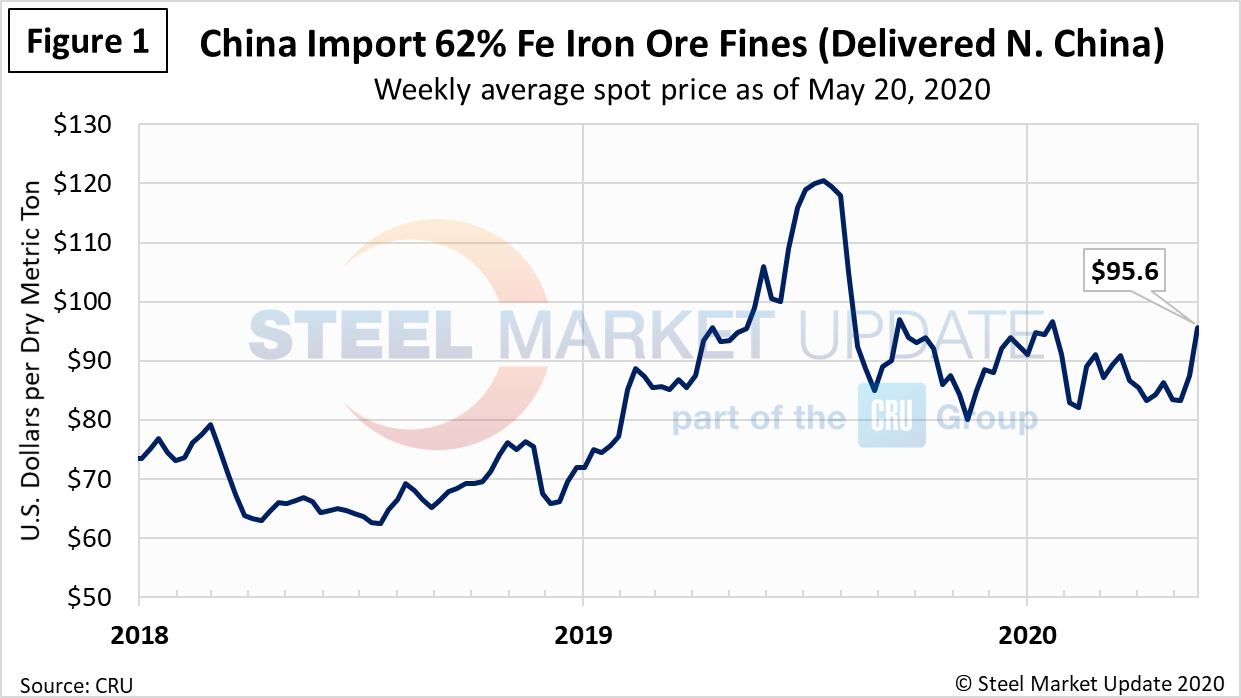
Coking Coal
The price of premium low volatile coking coal FOB east coast of Australia rose to $116.0/dmt as of May 20, a minor change of pace from April’s sharp decline (Figure 2). Recent coking coal prices are at their lowest levels seen in our limited history.
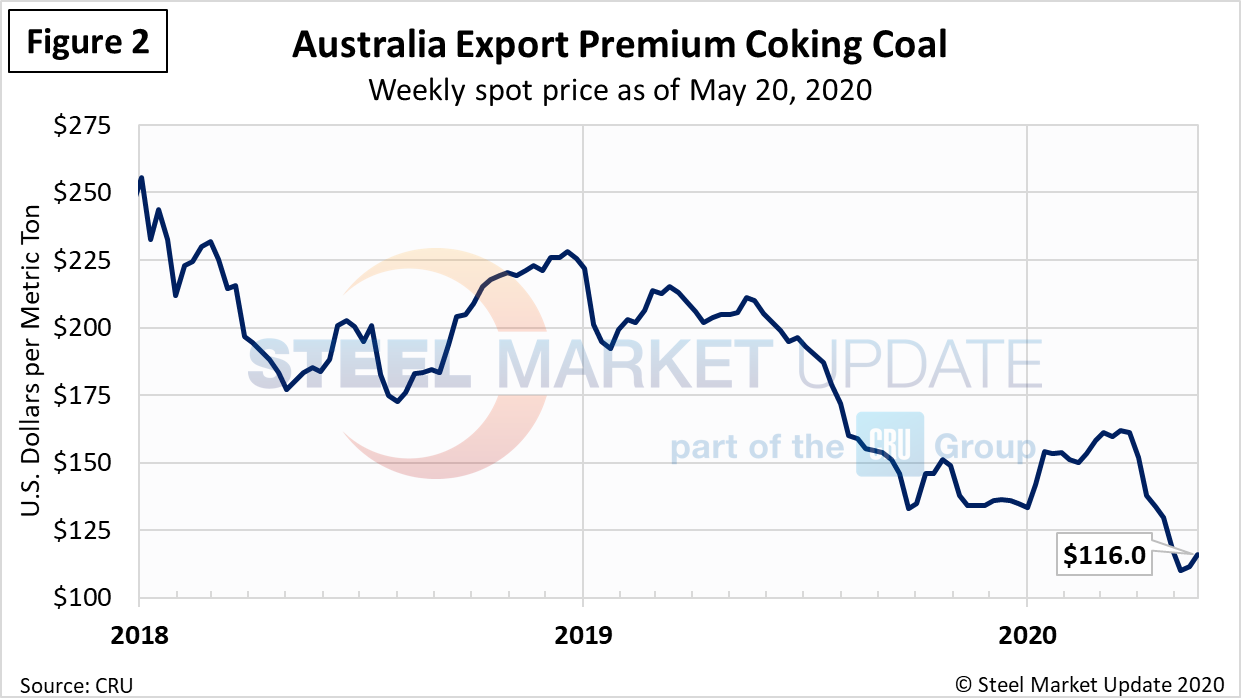
Pig Iron
Most of the pig iron imported to the U.S. currently comes from Russia, Ukraine and Brazil. This report summarizes prices out of Brazil and averages the FOB value from the north and south ports. The latest data through May 20 shows an average pig iron price of $275 per metric ton, down from $325 in February and March. Pig iron prices have declined erratically since hitting a peak of $400 per ton in mid-2018 (Figure 3).
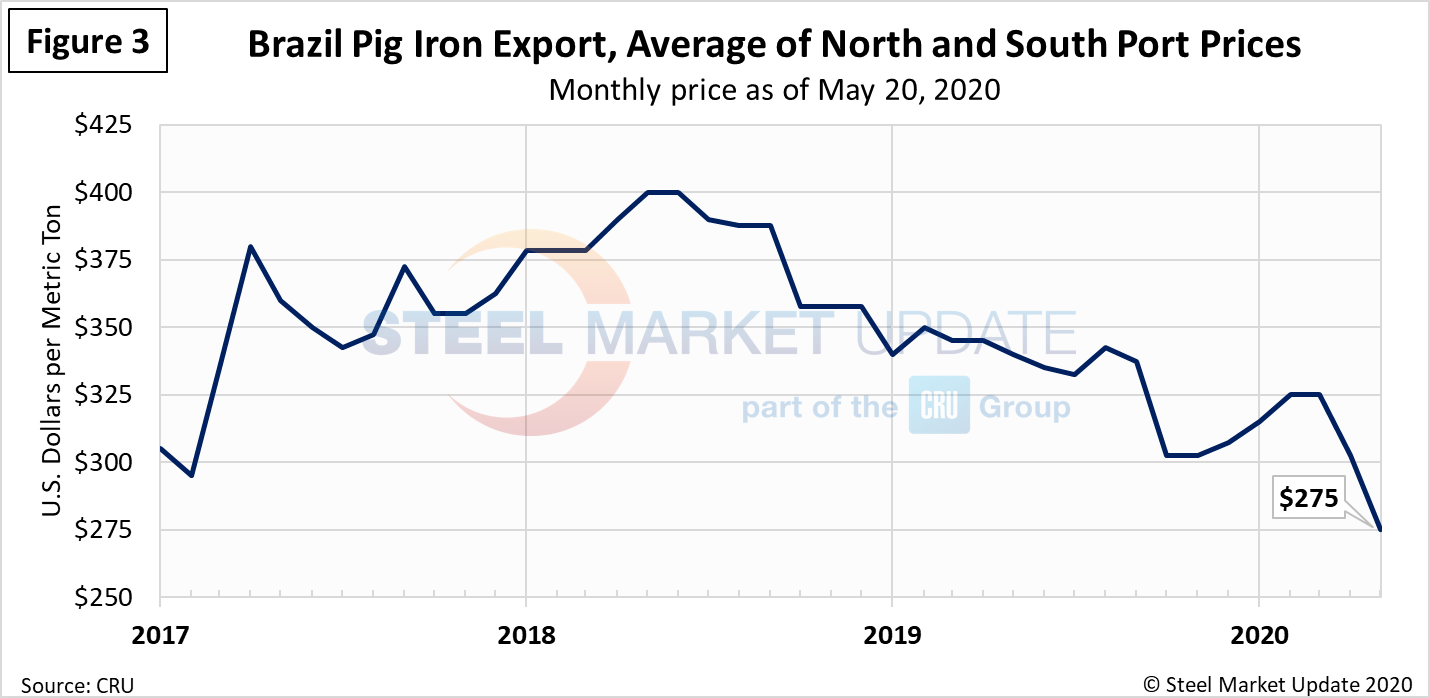
Scrap
Hot rolled steel prices fluctuate up and down with the price the mills must pay for their raw materials. Changes in the relationship between scrap and iron ore prices offer insights into the competitiveness of integrated mills, whose primary feedstock is iron ore, versus the minimills, whose primary feedstock is scrap. Prices for both prime/busheling and obsolete/shredded scrap have moved up in recent weeks as supplies have tightened due to the coronavirus shutdowns and related disruptions to scrap collection. Figure 4 shows the relationship between shredded and busheling, both priced in dollars per gross ton in the Great Lakes region.
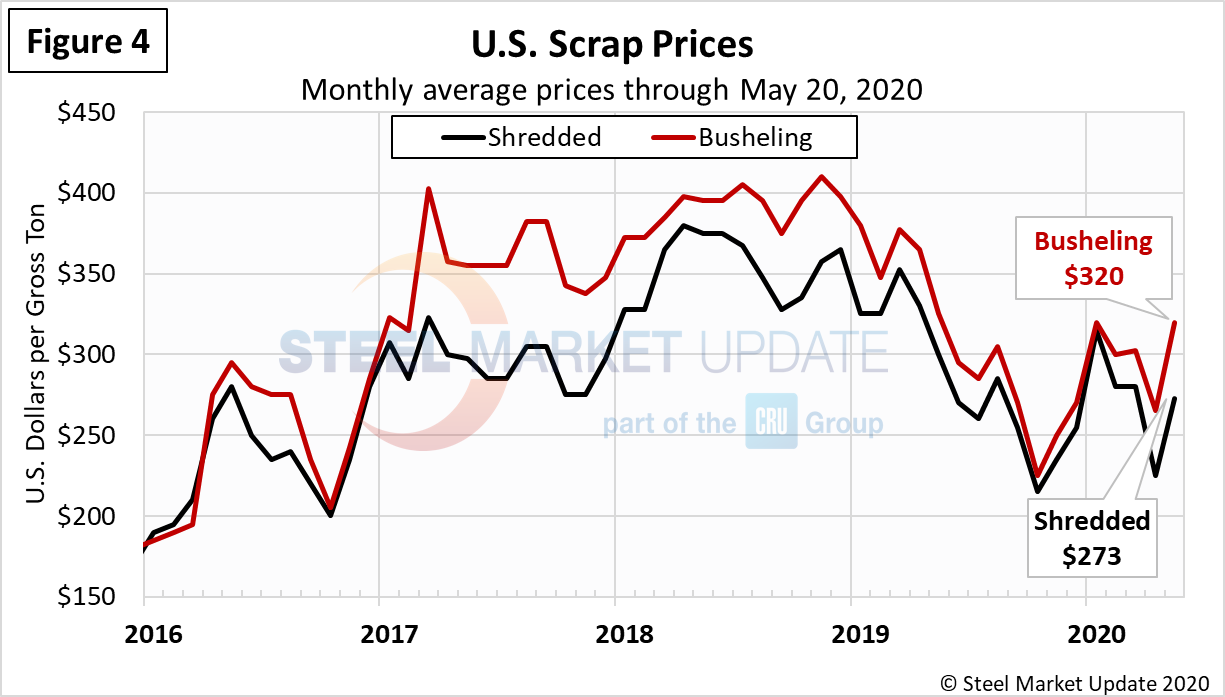
Figure 5 shows the recent spread between the price of iron ore, at $95.6 per dry metric ton, and shredded scrap at $273 per gross ton. Both ore and scrap have moved higher in recent weeks, lending some support to finished steel prices.
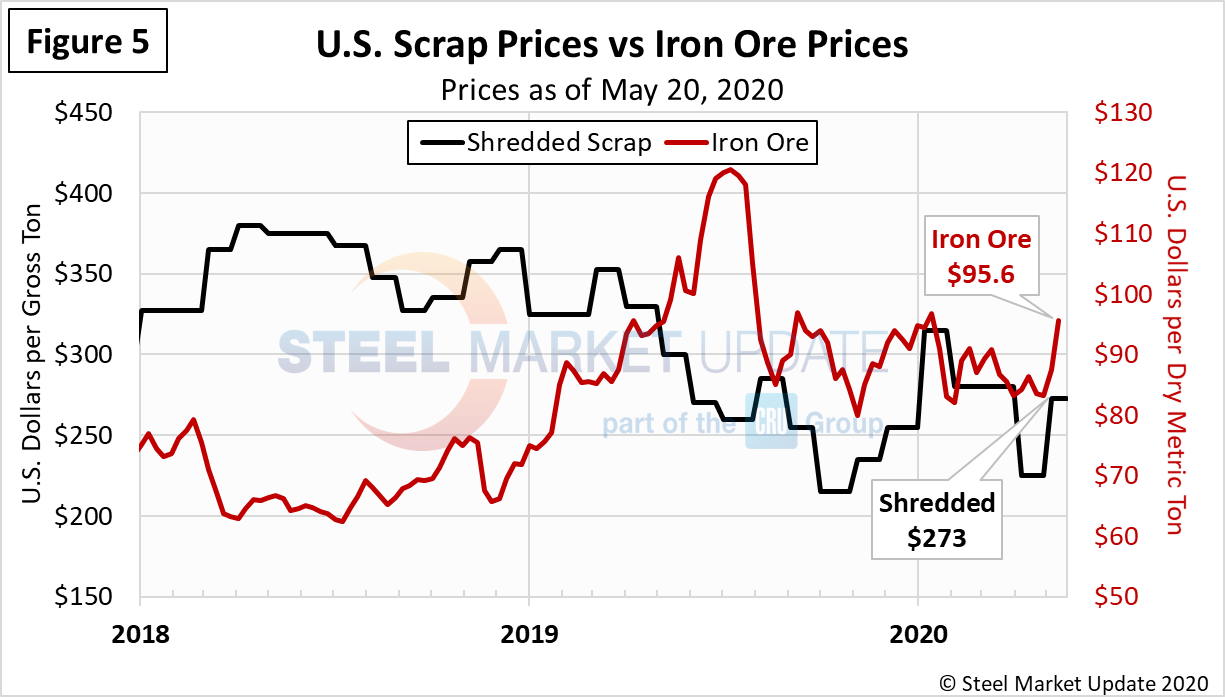
To compare the two, Steel Market Update divides the shredded scrap price by the iron ore price to calculate a ratio (Figure 6). A high ratio favors the integrated/BF producers, a lower ratio favors the minimill/EAF producers. As the 2.85 ratio shows, the recent increases in the price of ore have outpaced the increases in the price of scrap, adding slightly to the minimills’ competitive cost advantage.
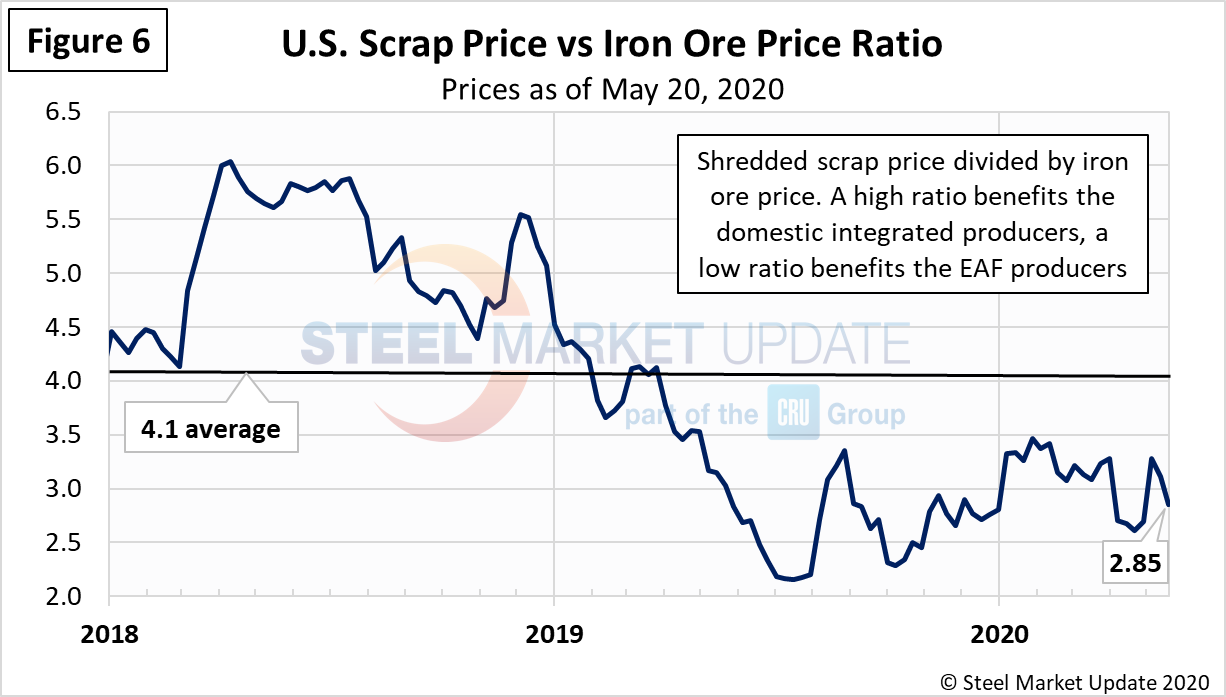
Figure 7 shows how the price of hot rolled steel tracks with the price of shredded scrap. Shred rose by approximately $50 from April to May, while hot rolled prices were flat over that same one month period.
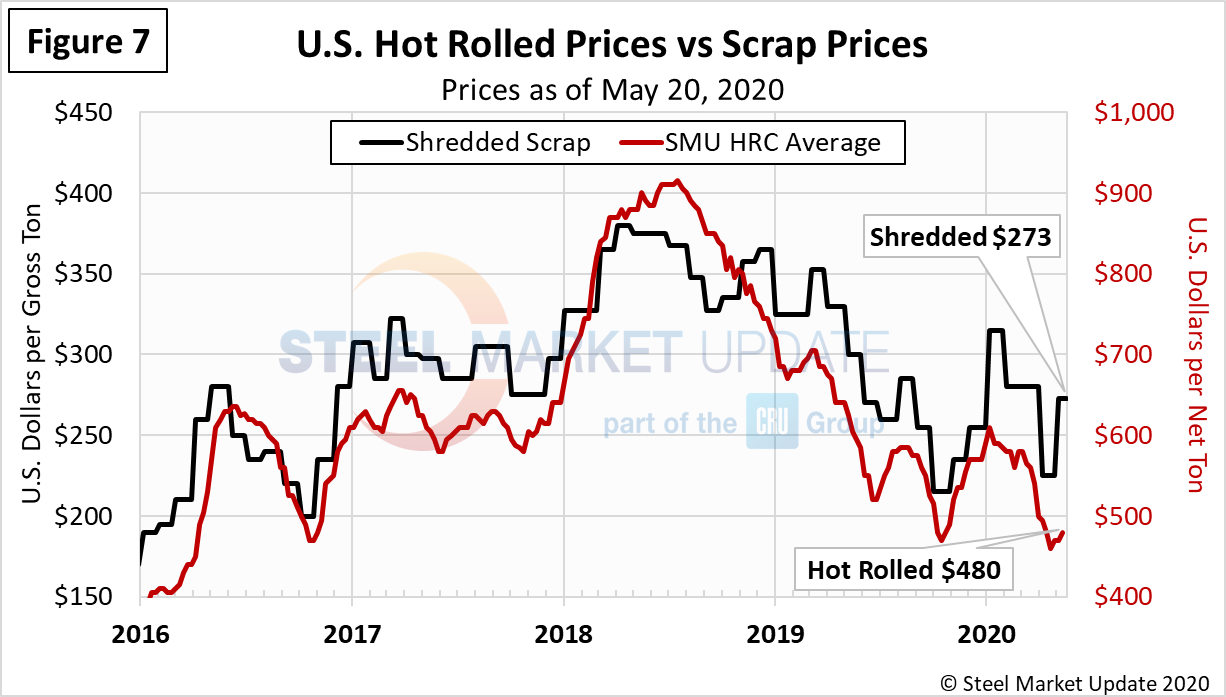
Zinc
Zinc, used to make galvanized and other products, declined in price for much of the first quarter but started rebounding in the second quarter (Figure 8). The LME cash price per pound of zinc as of May 21 was $0.8918, up over the mid-March low of $0.8239 but down from the mid-January peak of $1.1186. The price of zinc factors into the coating extras charged by the mills for galvanized products. Aluminum prices, which factor into the price of Galvalume, have been relatively flat since early-April, with the LME cash price per pound of aluminum as of May 21 at $0.6728.
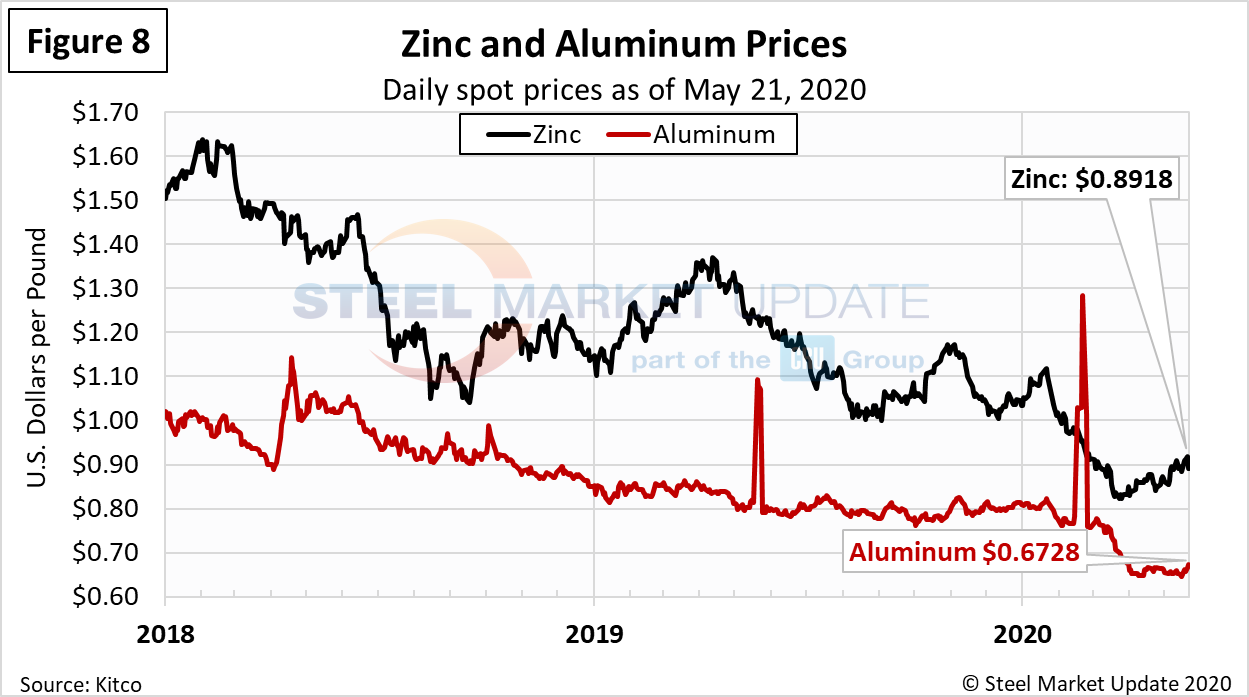

Brett Linton
Read more from Brett LintonLatest in Steel Products Prices North America

Nucor maintains plate prices, opens August order book
Nucor aims to keep plate prices flat again with the opening of its August order book.

Nucor CSP remains level at $900/ton
Nucor maintained its weekly list price for hot-rolled (HR) coil this week, following two consecutive increases.

Cliffs raises prices, seeks $950/ton for July spot HR
Cleveland-Cliffs plans to increase prices for hot-rolled (HR) coil to $950 per short ton (st) with the opening of its July spot order book. The Cleveland-based steelmaker said the price hike was effective immediately in a letter to customers dated Monday.

HRC vs. prime scrap spread widens in June
The price spread between HRC and prime scrap widened in June.

SMU price ranges: Steel prices rise in response to tariffs
Steel prices climbed for a second straight week across all five sheet and plate products tracked by SMU.
